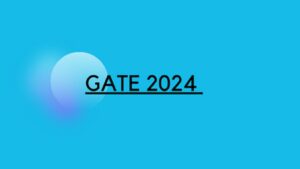Introduction
In the dynamic realm of product development, design verification stands as a cornerstone for ensuring the integrity, reliability, and functionality of a product. To delve into the intricacies of this crucial process, we have crafted five quizzes covering different facets of design verification. This blog post serves as both an introduction to the quizzes and an exploration of the key concepts, challenges, and strategies associated with design verification.
Join TechoVedas Community here
Understanding: Design Verification
Design verification is a crucial process within product development that focuses on ensuring that a product’s design meets specified requirements. It is a systematic and rigorous examination of the product’s design to confirm that it aligns with the intended goals and specifications. This process plays a pivotal role in validating the correctness and reliability of the design before moving forward with manufacturing and production.
Importance in the Product Development Lifecycle
In the product development lifecycle, the importance of design verification cannot be overstated. It serves as a critical checkpoint, ensuring that a product’s design aligns with specified requirements before advancing to subsequent phases. By systematically confirming compliance and identifying potential issues early on, it mitigates risks and significantly reduces the likelihood of costly it flaws persisting into manufacturing. This process acts as a proactive quality assurance measure, enhancing the reliability and functionality of the final product. Ultimately, the role of design verification is integral to fostering efficiency, minimizing rework, and ensuring that the developed product meets both regulatory standards and customer expectations.
Key Objectives and Distinctions
The objectives of design verification are vast, encompassing everything from confirming design specifications to contributing to regulatory compliance. In the first quiz, we explore the fundamentals, differentiating design verification from validation and elucidating its pivotal role in the product development lifecycle.
Read More: 3 Courses to master Physical design for your next job – techovedas
Navigating the Planning and Strategy Terrain
Navigating the planning and strategy terrain in it is essential for the seamless execution of a comprehensive testing process.
Crafting a robust plan sets the foundation for successful verification, outlining objectives, scope, resources, and schedules. Prioritizing critical areas and potential risks ensures focused testing efforts. Moreover, The role of risk analysis becomes pivotal, guiding strategic decisions. Effectively navigating this terrain requires a blend of meticulous planning, strategic thinking, and a keen understanding of the product’s design.
By mastering the planning and strategy aspects, teams can optimize resources, enhance test coverage, and ultimately contribute to the reliability and success of this process.
Crafting Comprehensive Test Plans
A successful design verification process begins with meticulous planning. The second set of quizzes delves into the components of a robust test plan, the strategies for prioritizing test cases in resource-constrained scenarios, and the integral role of risk analysis in effective test planning.
Read more: A day in the life of Physical Design engineer
Precision in Test Cases and Execution
Effective Test Case Development
Developing effective test cases is an art, and the third set of quizzes dissects this artistry. From understanding the process of crafting clear and specific test cases to prioritizing them strategically, these quizzes sharpen your skills in executing thorough its tests.
Tools and Automation: The Tech Allies
Commonly Used Tools and Strategies
In the realm of design verification, leveraging commonly used tools and strategies is essential for precision and efficiency. Computer-Aided Design (CAD), Computer-Aided Manufacturing (CAM), and Computer-Aided Engineering (CAE) tools are integral for meticulous analysis and simulation, providing detailed insights into the product’s design. These tools streamline the verification process, ensuring accuracy and accelerating development. Test automation is another powerful strategy, expediting the execution of repetitive test cases and allowing teams to focus on more intricate aspects of this. Balancing these tools and strategies is key, creating a synergistic approach that optimizes the verification process and contributes to the overall success of product development.
Tackling Challenges and Fostering Continuous Improvement
Tackling challenges and fostering continuous improvement in design verification is paramount for ensuring the robustness of the product development process. Challenges, such as miscommunication leading to unclear requirements or delays in delivery, must be addressed promptly. Through open communication and stakeholder involvement, these challenges can be mitigated. Additionally, fostering continuous improvement involves embracing feedback loops and regular retrospectives. By reflecting on processes and identifying areas for enhancement, teams can evolve their approach to design verification. This adaptive mindset not only overcomes immediate challenges but cultivates a culture of perpetual refinement, leading to increased efficiency and effectiveness in design verification practices.
Common Challenges and Strategies for Overcoming Them
The final set of quizzes tackles challenges head-on. From identifying common stumbling blocks in design verification to proposing effective strategies for overcoming them, these quizzes aim to enhance your problem-solving skills and fortify your approach to design verification.
Continuous Improvement and Adaptation
Continuous improvement is the heartbeat of successful design verification. Feedback loops play a pivotal role in this process, as explored in the fourteenth quiz. Additionally, the fifteenth quiz tackles the adaptability of design verification processes in the context of iterative development methodologies.
[ays_quiz id=’10’]
Conclusion:
As we embark on this comprehensive journey through five quizzes, the goal is not only to assess your knowledge but to empower you with insights, strategies, and a holistic understanding of design verification. Engage with each quiz thoughtfully, and let’s collectively elevate our mastery in ensuring the excellence of product designs through effective verification processes. Happy quizzing!








